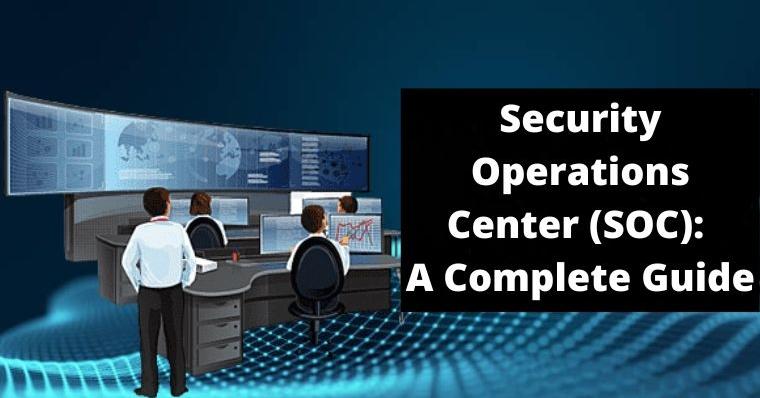In the realm of cybersecurity, a Security Operations Center (SOC) stands as a crucial element in safeguarding the digital infrastructure of organizations. This comprehensive article delves into the concept of SOC, its functionalities, and its critical role in contemporary cybersecurity, including a brief overview of ‘Managed SOC‘ services.
The Role of a Security Operations Center (SOC)
A Security Operations Center (SOC) is a centralized unit that deals with security issues on an organizational and technical level. Essentially, it is the heart of an organization’s cybersecurity framework, equipped with sophisticated tools and skilled professionals dedicated to continuous monitoring and analysis of an organization’s security posture.
Key Functions of a SOC
- Threat Detection: SOCs are tasked with the continuous monitoring of networks, servers, endpoints, databases, applications, websites, and other systems for any unusual activity that could be indicative of a security incident.
- Incident Response: Upon detecting a potential security threat, the SOC team springs into action to mitigate the risk. This response can range from simple fixes, like patching a vulnerability, to complex remediation strategies in case of a significant breach.
- Monitoring and Analysis: Continuous monitoring of network traffic and logs is a primary function of a SOC. This includes analyzing security events to identify trends that could indicate a potential threat.
- Reporting and Communication: SOC teams regularly compile reports on security status, incident response, and ongoing monitoring activities. These reports are vital for stakeholders to understand the cybersecurity landscape of the organization.
- Compliance Management: SOCs also ensure that security operations comply with relevant regulations and standards, thereby avoiding legal and financial penalties associated with non-compliance.
The Importance of SOCs in Modern Businesses
In today’s digital era, where cyber threats are increasingly sophisticated, having a dedicated SOC is vital for businesses. It helps in:
- Proactively Identifying and Mitigating Risks: SOCs play a proactive role in identifying potential security threats and mitigating them before they escalate into major issues.
- Ensuring Regulatory Compliance: Many industries have stringent data protection and privacy regulations. SOCs help in maintaining compliance with these regulations.
- Safeguarding Sensitive Data: With businesses storing vast amounts of sensitive data, a SOC is critical in protecting this data from cyber threats.
- Maintaining Business Continuity: By preventing and responding to cyber threats effectively, SOCs help ensure that business operations are not disrupted.
Types of SOCs
- In-house SOC: Some organizations opt to have their own in-house SOC. While this offers greater control over security operations, it requires significant investment in technology and skilled personnel.
- Virtual SOC: A virtual SOC provides remote monitoring and management of an organization’s security operations. It is a cost-effective option for businesses that cannot afford to set up an in-house SOC.
- Hybrid SOC: A hybrid SOC combines elements of both in-house and virtual SOCs, offering flexibility in how security operations are managed.
Managed SOC Services
Managed SOC refers to outsourced services where a third-party provider manages an organization’s SOC. These services include continuous monitoring, incident response, threat intelligence, and compliance management. Opting for a managed SOC allows organizations to benefit from advanced security expertise and technology without the significant investment required for an in-house SOC.
Implementing a SOC
Setting up a SOC involves several key steps:
- Assessment of Needs: Understand the specific security needs of your organization. This includes identifying the assets that need protection and the level of monitoring required.
- Choosing the Right Model: Decide whether an in-house, virtual, or hybrid SOC model best suits your organization’s needs.
- Investing in Technology and Tools: Invest in the necessary technology and tools for monitoring, threat detection, and incident response.
- Hiring and Training Staff: Assemble a team of skilled cybersecurity professionals and ensure they are trained in the latest cybersecurity practices and tools.
- Developing Processes and Protocols: Establish clear processes and protocols for threat detection, incident response, reporting, and compliance management.
Challenges in SOC Operations
Operating a SOC comes with its set of challenges:
- Managing Large Volumes of Data: SOCs deal with vast amounts of data, making it challenging to identify legitimate threats among numerous security alerts.
- Staying Ahead of Evolving Threats: Cyber threats are constantly evolving, requiring SOCs to continuously update their strategies and tools.
- Skill Shortages: There is a growing shortage of skilled cybersecurity professionals, which can make staffing a SOC challenging.
- Ensuring 24/7 Operations: Cyber threats can occur at any time, necessitating round-the-clock monitoring, which can be resource-intensive.
Conclusion
A Security Operations Center (SOC) is an indispensable component of an organization’s cybersecurity strategy. It plays a critical role in monitoring, detecting, responding to, and preventing cyber threats, thereby safeguarding the organization’s digital assets. Whether opting for an in-house, virtual, or hybrid SOC or choosing managed SOC services, organizations must carefully assess their specific needs and capabilities. As cyber threats continue to grow in sophistication, the importance of an effective SOC in ensuring robust cybersecurity cannot be understated.

